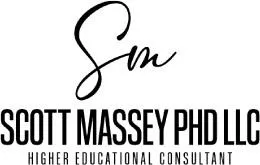BLOG
SCOTT'S THOUGHTS

Proving Einstein’s theory, and nine more surprising facts about eclipses
Albert Einstein proposed his general theory of relativity in 1915, but the scientific community remained skeptical, unwilling to accept Einstein’s notions about the nature of light. He adjusted his theory in terms of the mathematics of gravitation. A total solar eclipse in England on May 29, 1919, gave scientists the chance they needed to test Einstein’s theory. A team of scientists led by Sir Arthur Eddington used the eclipse conditions to measure how much background starlight is “bent” as it passes by the sun, and the results convinced the scientific community by and large that Einstein was correct – catapulting him to fame, and soon after that to a Nobel Prize.
Next week, people throughout the United States will enjoy a total solar eclipse. The April 8 event will begin in Texas at 1:27 p.m. CDT and end in Maine at 3:35 p.m. EDT, but where you are in its path will determine the exact time you can enjoy this fantastic sky show. The path of totality (a view of a completely covered sun) stretches from Texas to Maine through Arkansas, Missouri, Kentucky, Illinois, Indiana, Ohio, Pennsylvania, New York, Vermont, and New Hampshire. August 21, 2017, was the last time the United States enjoyed this view, though eclipses may occur three to four times yearly at various locations worldwide.
Staring at the sun is never a good idea; it’s a good way to give yourself a headache and harsh on your eyes. But during an eclipse, all that wonderful white sunlight becomes concentrated into a super-bright point, which is more than our eyes can handle. The only safe way to view a solar eclipse is with solar eclipse glasses, except during the few minutes of totality.
Otherwise, you chance burning the cells in the retina by staring at the exceptionally bright, concentrated sunlight. You won’t feel the burn as it happens, but your body can’t heal or replace those cells. Solar retinopathy’s symptoms are blurred vision and color distortion. And no, you don’t want to use a telescope, binoculars, or even your mobile phone to watch the event, though you definitely should take pictures – once you’ve got your solar eclipse glasses on.
But this is information most of us already know. Let’s share some interesting facts about solar eclipses that are a bit more obscure. Proving the theory of relativity was just the beginning.
Earth is the only planet in our solar system where one can witness a total solar eclipse because of a remarkable match between our moon's size and our distance from the Sun. This happy coincidence makes both celestial bodies appear the same size and allows for the beautiful corona we witness during a solar eclipse.
However, in 600 million years, our moon will be farther from Earth, so complete solar eclipses will no longer be possible.
Astronomers use the word “syzygy” to describe when the Sun, Moon, and Earth line up straight.
Carbondale, Illinois, is the only place in the United States that was in the path of totality for the August 21, 2017, eclipse and will be again during the one we’re about to get. Lucky them!
At least 37 films have featured eclipses in their plots – though not always correctly – including Rogue One, Pitch Black, Ladyhawke, Fantasia, 2001: A Space Odyssey, Apocalypto, Hellboy, and two Stephen King adaptions: Gerald’s Game and Delores Claiborne. King’s books featured dramatic scenes during the 1963 solar eclipse, linking the characters together.
In 1504, Christopher Columbus used a fortunately timed lunar eclipse to secure the cooperation of the Taino people in Jamaica, telling them that his god would inflame the moon with his wrath if they did not share food and supplies. Columbus knew the eclipse was due, thanks to his almanac of astronomic tables. Still, he took a significant risk in predicting it; his almanac was designed for European skies, so he couldn’t be certain the eclipse would be visible in Jamaica.
Temperatures can fall 5 to 10 degrees during a solar eclipse.
During a solar eclipse, if you take a moment to look at the shadow of a tree, you may see hundreds of tiny crescents decorating that shadow (the tree must be leafy, however). The effect is caused by “pinholes” of light filtering through the leaves. Any object with pinholes can cause the same effect, which is why shadow boxes work for eclipse viewing.
This coming April 8, there will be a huge wedding ceremony called “Elope at the Eclipse,” where almost 300 couples will get married just minutes before the totality. The event is in Russellville, Arkansas, and should make for some unique photos and memories for these couples!
I hope this has been a fun and informative look at our upcoming eclipse event. Remember to get your viewing glasses and enjoy this rare and beautiful astrological wonder!

Proving Einstein’s theory, and nine more surprising facts about eclipses
Albert Einstein proposed his general theory of relativity in 1915, but the scientific community remained skeptical, unwilling to accept Einstein’s notions about the nature of light. He adjusted his theory in terms of the mathematics of gravitation. A total solar eclipse in England on May 29, 1919, gave scientists the chance they needed to test Einstein’s theory. A team of scientists led by Sir Arthur Eddington used the eclipse conditions to measure how much background starlight is “bent” as it passes by the sun, and the results convinced the scientific community by and large that Einstein was correct – catapulting him to fame, and soon after that to a Nobel Prize.
Next week, people throughout the United States will enjoy a total solar eclipse. The April 8 event will begin in Texas at 1:27 p.m. CDT and end in Maine at 3:35 p.m. EDT, but where you are in its path will determine the exact time you can enjoy this fantastic sky show. The path of totality (a view of a completely covered sun) stretches from Texas to Maine through Arkansas, Missouri, Kentucky, Illinois, Indiana, Ohio, Pennsylvania, New York, Vermont, and New Hampshire. August 21, 2017, was the last time the United States enjoyed this view, though eclipses may occur three to four times yearly at various locations worldwide.
Staring at the sun is never a good idea; it’s a good way to give yourself a headache and harsh on your eyes. But during an eclipse, all that wonderful white sunlight becomes concentrated into a super-bright point, which is more than our eyes can handle. The only safe way to view a solar eclipse is with solar eclipse glasses, except during the few minutes of totality.
Otherwise, you chance burning the cells in the retina by staring at the exceptionally bright, concentrated sunlight. You won’t feel the burn as it happens, but your body can’t heal or replace those cells. Solar retinopathy’s symptoms are blurred vision and color distortion. And no, you don’t want to use a telescope, binoculars, or even your mobile phone to watch the event, though you definitely should take pictures – once you’ve got your solar eclipse glasses on.
But this is information most of us already know. Let’s share some interesting facts about solar eclipses that are a bit more obscure. Proving the theory of relativity was just the beginning.
Earth is the only planet in our solar system where one can witness a total solar eclipse because of a remarkable match between our moon's size and our distance from the Sun. This happy coincidence makes both celestial bodies appear the same size and allows for the beautiful corona we witness during a solar eclipse.
However, in 600 million years, our moon will be farther from Earth, so complete solar eclipses will no longer be possible.
Astronomers use the word “syzygy” to describe when the Sun, Moon, and Earth line up straight.
Carbondale, Illinois, is the only place in the United States that was in the path of totality for the August 21, 2017, eclipse and will be again during the one we’re about to get. Lucky them!
At least 37 films have featured eclipses in their plots – though not always correctly – including Rogue One, Pitch Black, Ladyhawke, Fantasia, 2001: A Space Odyssey, Apocalypto, Hellboy, and two Stephen King adaptions: Gerald’s Game and Delores Claiborne. King’s books featured dramatic scenes during the 1963 solar eclipse, linking the characters together.
In 1504, Christopher Columbus used a fortunately timed lunar eclipse to secure the cooperation of the Taino people in Jamaica, telling them that his god would inflame the moon with his wrath if they did not share food and supplies. Columbus knew the eclipse was due, thanks to his almanac of astronomic tables. Still, he took a significant risk in predicting it; his almanac was designed for European skies, so he couldn’t be certain the eclipse would be visible in Jamaica.
Temperatures can fall 5 to 10 degrees during a solar eclipse.
During a solar eclipse, if you take a moment to look at the shadow of a tree, you may see hundreds of tiny crescents decorating that shadow (the tree must be leafy, however). The effect is caused by “pinholes” of light filtering through the leaves. Any object with pinholes can cause the same effect, which is why shadow boxes work for eclipse viewing.
This coming April 8, there will be a huge wedding ceremony called “Elope at the Eclipse,” where almost 300 couples will get married just minutes before the totality. The event is in Russellville, Arkansas, and should make for some unique photos and memories for these couples!
I hope this has been a fun and informative look at our upcoming eclipse event. Remember to get your viewing glasses and enjoy this rare and beautiful astrological wonder!
Don't miss out on future events!
Subscribe to our newsletter

© 2026 Scott Massey Ph.D. LLC

